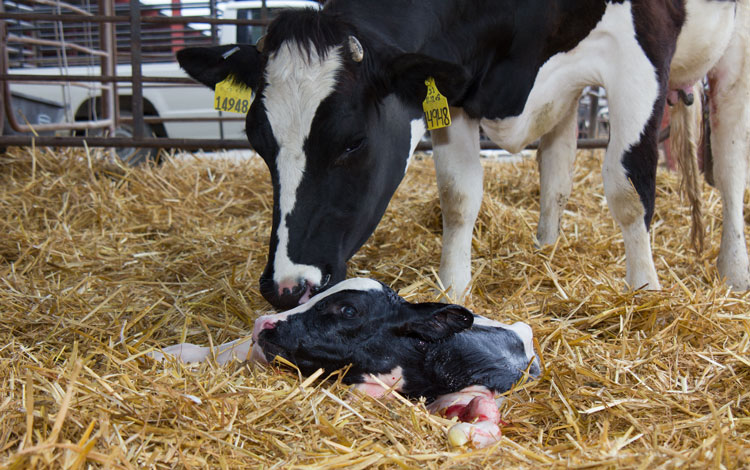
I received one of my favorite types of texts from my dad this weekend. It was a photo of a pitch black, newly born Holstein heifer out of one of my cows. Just the way I like them! More importantly, she was already dried off and nestled in a warm bed of straw after finishing a serving of colostrum.
Our maternity pen has evolved throughout the years, but today, it features a bedded pack close-up pen where cows reside from three weeks before calving until parturition begins. When signs of calving are noticed the cow is moved to a secluded pen with dry bedding to calve. For us, this system works best because it pairs a clean, secluded calving space with a convenient area for workers to keep a close eye on prefresh animals.
According to Iowa State’s Jenn Bentley, finding the right maternity system on a farm is all about providing the necessities for the cow while meeting the preferences of the farm.
In an Iowa State extension and outreach article, she described three common types of maternity areas that can all meet the requirements of the calving cow and those that work with it.
She described the traditional calving scenario as one that a cow enters a few days before calving. It is either an individual pen or a group pen that allows for 144 square feet per cow or 120 square feet per cow, respectively. Social challenges tend to be relatively low in this calving scenario according to Bentley, but it can make it more difficult on the cow during calving and on the workers when trying to feed different prefresh rations.
The second common calving option is just in time calving, which moves cows to individual or group calving pens when signs of calving have been presented. In this system, it is important to “limit new additions to once a week and locate the calving pens close to the prefresh pens,” said Bentley. Since these areas often don’t include feed and water, calving should occur shortly after the cow arrives in the pen.
The final type of maternity area described by Bentley is socially stable calving. Farms using this system keep the same group of cows together throughout the prefresh period. Pens in these scenarios should be sized for 1.4 times the weekly calving rate. As cows calve, no new animals should be added.
Maternity care is still an art, but planning a calving space that best cares for your cows while fulfilling the preferences of your farm can be a home run delivering healthy calves and smooth transitions.

The author is an associate editor. She covers feeding and nutrition, youth activities and heads up the World Dairy Expo Supplement. Maggie was raised on a 150-cow dairy near Valley Center, Kansas, and graduated from Kansas State University with degrees in agricultural communications and animal sciences.







